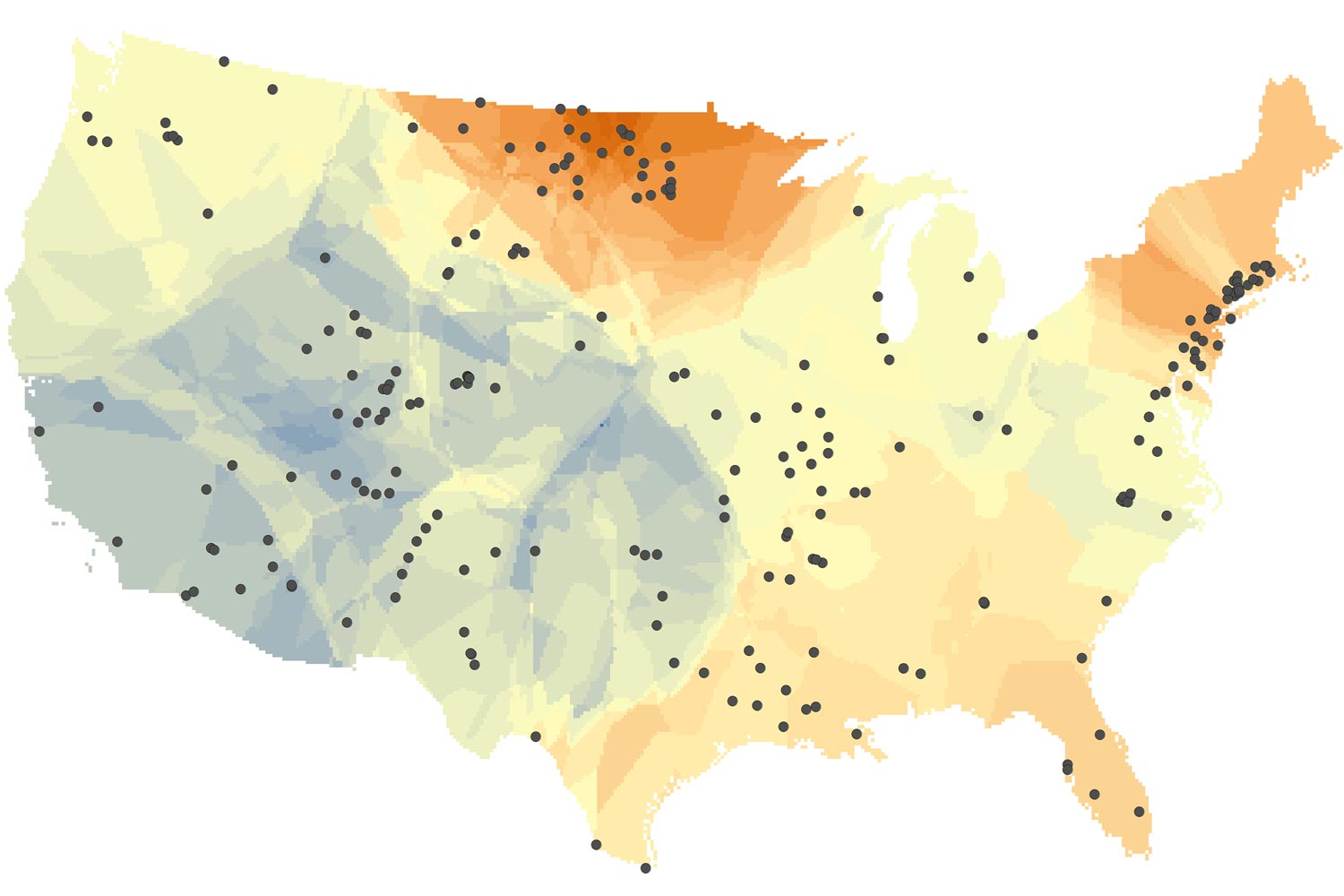Across North America, streams and rivers are becoming saltier, thanks to road deicers, fertilizers and other salty compounds that humans indirectly release into waterways. At the same time, freshwater supplies are becoming more alkaline. Salty, alkaline freshwater can create problems for drinking water supplies, urban infrastructure and natural ecosystems.
A new study, whose co-authors include University of Virginia environmental scientist Michael Pace, is the first to assess long-term changes in freshwater salinity and pH at the continental scale. Drawn from data recorded over the past 50 years at 232 U.S. Geological Survey monitoring sites across the country, the analysis shows significant increases in both salinization and alkalinization. Pace and his co-investigators at several institutions call the phenomenon “Freshwater Salinization Syndrome.”
The analysis, which has implications for freshwater management and salt regulation strategies in the United States, Canada and beyond, was published last week in the early edition of the Proceedings of the National Academy of Sciences. The study was led by researchers at the University of Maryland, with co-authors at UVA, the Cary Institute of Ecosystem Studies in Mill Brook, New York; the University of Connecticut; and Chatham University in Pittsburgh.

Environmental scientist Michael Pace is a co-author of a study that assessed long-term changes in water chemistry across the U.S. and parts of Canada. (Photo by Dan Addison, University Communications)
The researchers documented sharp chemical changes in many of the United States’ major rivers, including the Potomac, Mississippi, Hudson, Neuse, Canadian and Chattahoochee. Many of these rivers supply drinking water for nearby cities and towns, including some of the most densely populated urban centers along the Eastern Seaboard.
“We found that the pH of some rivers started increasing in the 1950s and ’60s – decades before the implementation of acid rain regulations,” Pace said. “We also observed increased salt concentrations in the Southeast, where they don’t apply road salts. These surprising trends presented a puzzle that our team worked to solve.”
The results suggest that salt ions, damaging in their own right, are driving up the pH of freshwater, making it more alkaline. Over the time period covered by the study, the researchers concluded that 37 percent of the drainage area of the contiguous United States experienced a significant increase in salinity. Alkalinization, which is influenced by a number of different factors in addition to salinity, increased by 90 percent.
The root causes of increased salt in waterways vary from region to region. In the snowy Mid-Atlantic and New England, road salt applied to maintain roadways in winter is a primary culprit. In the heavily agricultural Midwest, fertilizers – particularly those with high potassium content – also make major contributions. In other regions, mining waste and weathering of concrete, rocks and soils releases salts into adjacent waterways.
The researchers noted that many strategies for managing salt pollution already exist. Evidence suggests that brines can be more efficient than granulated salt for deicing roads, yielding the same effect with less overall salt input. Pre-salting before a major snow event can also improve results. However, according to the researchers, many Mid-Atlantic and Northeastern cities and states have outdated and inefficient salt-spreading equipment that is overdue for an upgrade.
Pace suggests that a better selection of salt compounds for specific weather conditions would be more efficient at melting snow and ice while using less salt, thereby helping to alleviate the problem.

Changes in the salt content of fresh water in rivers and streams over the past half-century: warmer colors indicate increasing salinity; cooler colors decreasing salinity. Black dots represent U.S.G.S. monitoring sites. (Illustration: Ryan Utz, Chatham University)
The researchers noted similar issues with the application of fertilizers in agricultural settings. In many cases, applying the right amount of fertilizer at the right time of the season can help reduce the overall output of salts into nearby streams and rivers. And more careful urban development strategies – primarily building farther from waterways and designing more effective stormwater drainage systems – can help reduce the amount of salt washed away from weathered concrete.
Pace and his colleagues also noted the need to monitor and replace aging water pipes throughout the country that have been impacted by corrosion and scaling, or the buildup of mineral deposits and microbial films. Such pipes are particularly vulnerable to saltier, more alkaline water, which can exacerbate the release of toxic metals and other contaminants – as occurred in Flint, Michigan when the city switched its primary water source to the Flint River in 2014. The river’s higher salt content, combined with chemical treatments, caused lead to leach from water pipes, creating a public water crisis.
“The trends we are seeing in the data all suggest that we need to consider the issue of salt pollution and begin to take it seriously,” said the study’s lead author, Sujay Kaushal, a professor of geology at the University of Maryland. “The Environmental Protection Agency does not regulate salts as primary contaminants in drinking water at the federal level, and there is inconsistency in managing salt pollution at the local level. These factors are something communities need to address to provide safe water now and for future generations.”
Media Contact
Article Information
January 12, 2018
/content/study-decades-deicing-and-fertilizers-leave-rivers-saltier-more-alkaline

